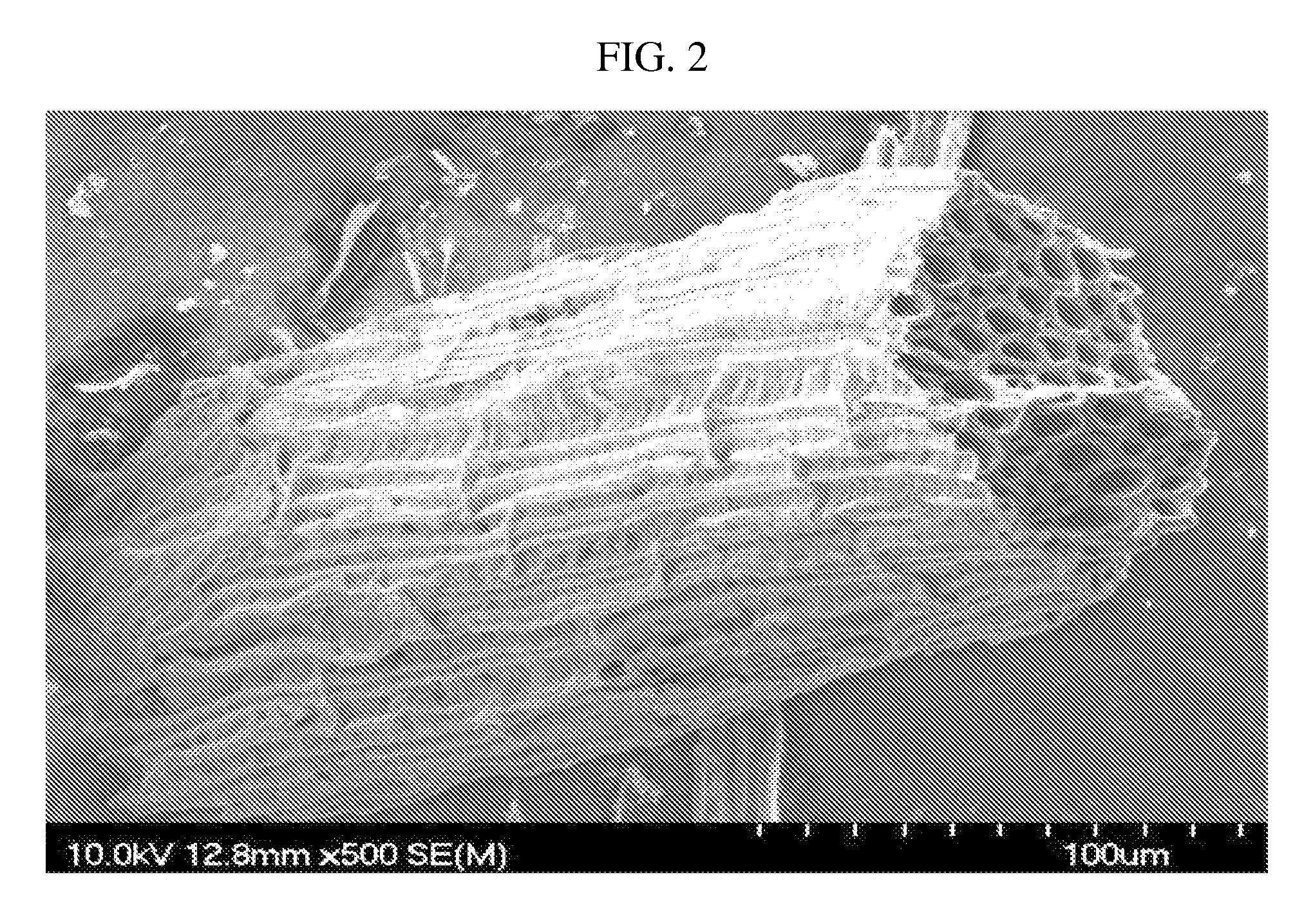Catalyst support using cellulose fibers, preparation method thereof, supported catalyst comprising nano-metal catalyst supported on carbon nanotubes directly grown on surface of the catalyst support, and method of preparing the supported catalyst
a technology of catalyst support and cellulose fiber, which is applied in the direction of metal/metal-oxide/metal-hydroxide catalyst, catalyst preparation method, organic compound/hydride/coordination complex catalyst, etc. it can solve the problems of low efficiency of catalyst preparation, and inability to meet the requirements of high-temperature catalysts. , to achieve the effect of maximizing the increase in catalytic reaction activity, reducing catalyst preparation cost and easy collection
- Summary
- Abstract
- Description
- Claims
- Application Information
AI Technical Summary
Benefits of technology
Problems solved by technology
Method used
Image
Examples
example 1
[0055](A) Henequen cellulose was split into individual fibers having a diameter ranging from tens to hundreds of μm, and was then cut to a length of 1˜2 mm in a state of being immersed in liquid nitrogen, thus obtaining a henequen cellulose catalyst support. If the fibers are split to have a diameter of sections thereof in the range of ones of μm, the surface area is advantageously increased. However, in the present invention, the fibers were individually split to a diameter ranging from tens to hundreds of μm through manual work.
[0056](B) The cellulose fibers cut to a predetermined diameter and length through (A) were heated to 700° C. at a heating rate of 10° C. / min in an atmosphere of hydrogen and nitrogen at 1:1, and were then maintained at 700° C. for 30 min, thereby preparing the carbonized catalyst support. Thereafter, the cellulose catalyst support was immersed in a 0.1 mol sulfuric acid aqueous solution, and was then treated for 60 cycles at a sweep rate of 50 mV / s at −0.15...
PUM
| Property | Measurement | Unit |
|---|---|---|
| length | aaaaa | aaaaa |
| pressure | aaaaa | aaaaa |
| temperature | aaaaa | aaaaa |
Abstract
Description
Claims
Application Information
 Login to View More
Login to View More - R&D
- Intellectual Property
- Life Sciences
- Materials
- Tech Scout
- Unparalleled Data Quality
- Higher Quality Content
- 60% Fewer Hallucinations
Browse by: Latest US Patents, China's latest patents, Technical Efficacy Thesaurus, Application Domain, Technology Topic, Popular Technical Reports.
© 2025 PatSnap. All rights reserved.Legal|Privacy policy|Modern Slavery Act Transparency Statement|Sitemap|About US| Contact US: help@patsnap.com



